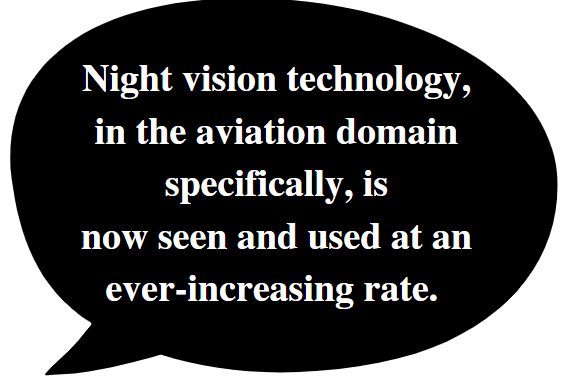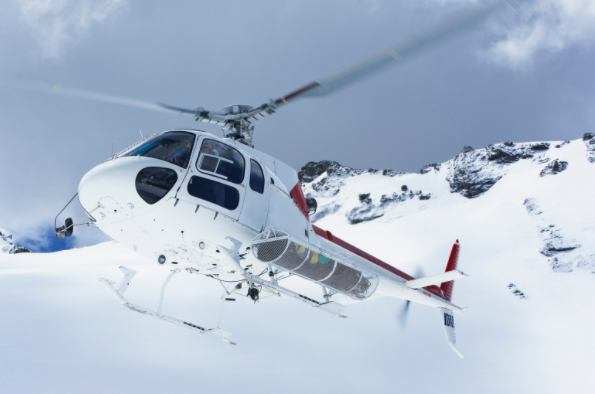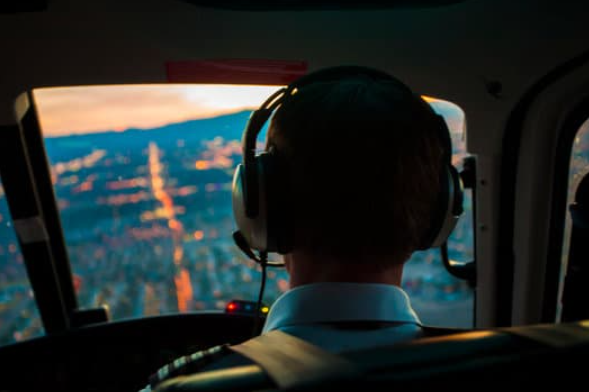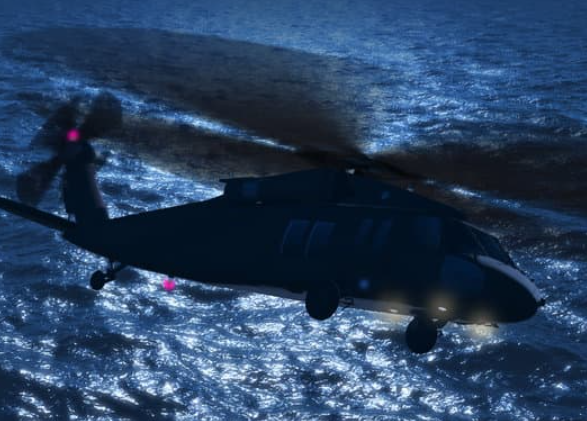The rising use of aviation NVG means more and more pilots and operators are conducting night flight operations. However, utilizing aviation NVG equates to following stringent rules and guidelines. These guidelines are laid out in order to ensure a safe and efficient flight.
In today’s post, let’s take a look at the operational defects of aviation night vision goggles, the regulations concerning night flying, and other essential information about aviation night vision technology.
Aviation NVG: More Than Just Military Applications
Night vision technology has been available for several years. However, it was only allowed for military applications – until recently.
Night vision technology, in the aviation domain specifically, is now seen and used at an ever-increasing rate. Helicopter emergency services, airborne law enforcement, aerial firefighting, agricultural aerial application, and other commercial applications.

Aerial firefighting, as well as crop spraying applications, have greatly benefited from the use of aviation NVG.
University flying programs and airborne media have also become more involved.
The safety and efficiency that NVIS technology brings a wide range of advantages to a variety of users and applications.
Ensuring a Safe Aviation NVG Operation
Night vision technology alone is not sufficient to ensure a safe and secure aviation NVG and NVIS operation.
Civilian and commercial operators who want to take advantage of the benefits made possible by the implementation of NVIS must follow a wealth of requirements.
These requirements and regulations are executed to ensure a smooth NVIS technology operation and contribute to a fruitful night flight experience.
NVIS Crew: Single Pilot and Technical Crew Member
NVIS operations are composed of a single pilot or operator. However, it’s important to note that there is a requirement for the crew to have one NVIS technical crew and one pilot in some jurisdictions.
The European Aviation Safety Agency (FAA) implements this rule when performing operations to and from a helicopter emergency medical services site. On the other hand, this is not the case under the Federal Aviation Administration (FAA).
The FAA, which is a United States governmental body, does not require a technical NVIS crew as part of the NVIS operations when departing from or landing at a helicopter emergency medical services site.
Many pilots and operators are allowed to a single-pilot NVIS operation under the FAA guidelines. However, there may be some “improved areas,” helipads, and airports where their take-off and landing are restricted.

These restrictions are enumerated in the FAA’s flight manual supplement for aviation NVG lighting supplemental type certificate (STC).
Typically, designated unimproved landing areas to require two trained crewmembers wearing aviation NVG. This rule ensures that one may assist the other in increasing situational awareness and obstacle avoidance.
This is the typical scenario of single-pilot emergency medical services (EMS) operators. One of the EMS crews is donning an aviation NVG and is appropriately trained and certified to use the night vision device.
Generally, in the United States, airborne law enforcement and emergency medical services are single-pilot operations. In the EMS field, a Bell 206/407 helicopter, in particular, will have a crew composed of a single pilot, a paramedic, and a nurse all donning aviation NVGs.
The aviation NVG-wearing nurse and paramedic assist the pilot, as required by the situation when arriving at an unimproved landing site.
In the law enforcement field, on the other hand, many aviation operations are single-pilot systems. However, in airborne law enforcement operations in an urban area, you may employ another tactical officer to help the pilot work with addresses, moving maps, and constant communication with the officers on the ground.
EMS operators flies under FAA Part 135. Airborne law enforcement crews are governed by FAA Part 135, Part 91, or depending on the type of the operation.
The general authority comes from the individual mission specifications.
Enhanced Visibility at Night
Night vision imaging systems are used for enhancing safety margins during night flight operations. The aim is not to allow for decreasing the night visual flight rules (VFR) iotas.
As you know, utilizing aviation night vision goggles enhances the safety features of night flight missions. However, you should never employ the night vision devices to decrease the night visual flight rules minima.
A majority of operators and aircraft crews can become uneasy and uncomfortable upon returning from their night flight operations after using aviation night vision goggles.
The use of aviation night vision goggles is only allowed for night visual flight rules.
It’s essential for pilots and operators to conform to the ceiling and visibility prerequisites of the relevant applications.
They must also comply with the operational authorization and process specifications.
On top of that, pilots and operators cannot alter the weather type (for instance, night instrument flight rules to visual flight rules) they are allowed to operate in.
The FAA regulations state that Part 135 aviation operators must follow Part 91 specifications.
On top of that, they must have visibility requirements and night flight rule ceiling manifested in their operations stipulations.
Aviation NVG: Enhancing Situation Awareness

Aviation night vision goggles radically improve situational awareness.
These night vision devices enable the flight crew to have an excellent visual of the terrain. These devices also permit pilots and operators to see certain obstacles as well as developing weather patterns.
On top of that, aviation night vision goggles can help reduce workload and stress as a result of the improved situational awareness.
Gear Requirements
There are a strict protocol and decorum that operators need to comply with before getting approval for NVIS compatibility with their aircraft lighting.
In newer and more modern aircraft, the Original Equipment Manufacturer (OEM) of the aircraft can perform most of the NVIS modification needed.
All the equipment added to the aircraft is done in the completion center. The operator-required alterations can then be done through the installation of the NVIS Supplementary Type Certificate.
The night vision goggles to be used must be recognized as official in the flight manual supplement (FMS) of the NVIS Supplementary Type Certificate.
In previous years, night vision goggles were registered by part number. That guideline still applies today. However, newer versions of the goggles are manufactured under TSO CI64a. Therefore, the flight manual supplement may permit any TSO night vision goggles to be employed. This guideline will depend on the holder of the NVIS supplementary type certificate.
Best Buy-In Process
The successful implementation of NVIS technology depends on good management buy-in. A buy-in refers to the arrangement to purchase assets.
Once the buy-in process is in place, it is essential to initiate conversations with the local civil aviation authority. The CAA provides direction on specific operational requirements.
From then, while the pilots and operators work on securing NVIS implementations for their aircraft – including acquiring the required training and purchasing the goggles – they can also be working with their local civil aviation authority.
These background talks between the local civil aviation authority, and the operators can contribute to the success of NVIS implementation and, ultimately, usage.
